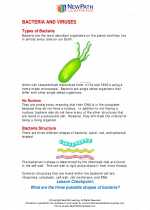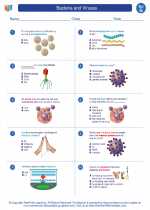Law of Independent Assortment
The law of independent assortment is one of the fundamental principles of genetics formulated by Gregor Mendel. It states that the inheritance of one trait is independent of the inheritance of another.
During gamete formation, the segregation of alleles for one gene does not influence the segregation of alleles for another gene. In other words, the inheritance of one gene does not affect the inheritance of another gene, as long as the genes are located on different chromosomes or are far apart on the same chromosome.
Key Points to Remember:
- Law of Independent Assortment states that the inheritance of one trait is independent of the inheritance of another.
- It applies when genes are located on different chromosomes or are far apart on the same chromosome.
- During gamete formation, alleles for different genes segregate independently of each other.
- This principle is a key factor in genetic diversity and the variation of traits in offspring.
Study Guide:
Here are some key concepts and questions to help you understand the law of independent assortment:
- What is the law of independent assortment and how does it contribute to genetic diversity?
- What are the conditions required for the law of independent assortment to apply?
- How does the process of gamete formation demonstrate the principle of independent assortment?
- Provide an example of a genetic cross that illustrates the law of independent assortment.
- Discuss the significance of the law of independent assortment in the field of genetics and its applications in understanding inheritance patterns.
Understanding the law of independent assortment is essential for comprehending the complexities of genetic inheritance and the factors contributing to variation in offspring.
Feel free to explore additional resources and examples to deepen your understanding of this important genetic principle!
[Law Of Independent Assortment] Related Worksheets and Study Guides:
.◂Science Worksheets and Study Guides Seventh Grade. Bacteria and Viruses

 Activity Lesson
Activity Lesson
 Worksheet/Answer key
Worksheet/Answer key
 Worksheet/Answer key
Worksheet/Answer key
 Worksheet/Answer key
Worksheet/Answer key
 Worksheet/Answer key
Worksheet/Answer key
 Vocabulary/Answer key
Vocabulary/Answer key
 Vocabulary/Answer key
Vocabulary/Answer key
 Vocabulary/Answer key
Vocabulary/Answer key
 Vocabulary/Answer key
Vocabulary/Answer key
